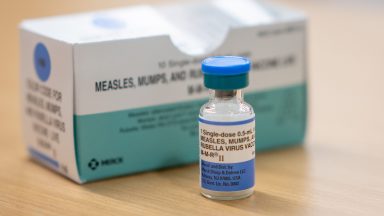
In the year 2000, the measles virus was declared eliminated within the United States, indicating that there was no ongoing viral transmission in the nation at that time. However, a recent outbreak in Texas has sparked significant concern among the populace, especially given that multiple cases have now been documented in states such as New York, California, and New Jersey. Although a large portion of the American population has received the MMR vaccine, which protects against measles, mumps, and rubella, questions arise about whether vaccinated individuals can still contract measles. Let’s delve deeper into this issue.
In the following sections, we will provide an in-depth analysis of the recent measles outbreak, including its origins and implications. Additionally, we will discuss effective strategies for preventing measles infection based on guidelines from the U.S. Centers for Disease Control and Prevention (CDC), ensuring you are well-informed and prepared.
The patient is under the age of 5, lives in Suffolk County and is unvaccinated, according to the Suffolk County Department of Health Services. https://t.co/URXBTM5s9B pic.twitter.com/i0NoqATaiV
— CBS New York (@CBSNewYork) March 12, 2025
Understanding Measles: Symptoms and Transmission Risks
According to the CDC, measles (known scientifically as rubeola) is an exceptionally contagious viral infection. When an individual contracts the virus, it can spread to as many as 9 or 10 people in close proximity who lack immunity. The infection is transmitted primarily through airborne droplets released when an infected person coughs or sneezes. Alarmingly, the virus can remain viable in the air for up to two hours, allowing it to infect anyone who enters the room even after the infected person has departed. This highlights the importance of vaccination and herd immunity in preventing outbreaks.
The clinical manifestations of measles typically begin with a high fever that can soar to 104°F, accompanied by a distinctive red rash that appears several days after the initial symptoms. Other common symptoms include a persistent cough, a runny nose, and red or watery eyes, which can lead to significant discomfort and potential complications if not managed appropriately. Understanding these symptoms can help in timely diagnosis and treatment.
Examining the 2025 Measles Cases: An Alarming Surge
In the first quarter of 2025, approximately 523 cases of measles have been reported, marking the second-highest total observed in a decade, trailing only behind the alarming figures from 2019, which recorded over 1,200 cases. A staggering 400 of these confirmed cases are from Texas alone, raising serious public health concerns. This surge highlights the critical need for vaccination and public awareness regarding the risks of measles.
It is important to note that the current figures are likely an underrepresentation of the true extent of the outbreak, as delays in state reporting to federal health agencies can lead to significant discrepancies in data. Keeping track of these cases is vital for assessing the outbreak’s impact and formulating effective public health responses.
MMR Vaccine: Essential Protection Against Measles
The MMR vaccine protects against three serious viral illnesses: measles, mumps, and rubella. This vaccine is typically administered in two doses during childhood. The CDC states that when both doses are received, the vaccine is 97 percent effective in preventing measles. However, receiving just one dose offers a 93 percent effectiveness rate, underscoring the necessity of completing the full vaccination schedule for optimal protection against these contagious diseases.
Vaccinated Individuals and Measles: Understanding the Risks
Despite being vaccinated, it is still possible—though rare—for individuals to contract measles. According to the CDC, about 3 out of every 100 vaccinated individuals may become infected when exposed to the virus. However, the symptoms experienced by these vaccinated individuals are generally much milder than those observed in unvaccinated individuals. This highlights the importance of maintaining high vaccination rates within the community to ensure herd immunity and reduce the likelihood of outbreaks.
Measles Treatment: Understanding the Lack of Cure
Currently, there is no cure or specific treatment available for measles once an individual has contracted the virus. Those at risk of severe complications may require hospitalization for supportive care. It is critical for individuals to recognize the signs of measles and seek medical attention promptly to mitigate potential health risks. Both the American Academy of Pediatrics and the Centers for Disease Control and Prevention strongly advocate that the most effective preventive measure against measles is comprehensive vaccination.
Vaccination not only protects individuals but also contributes to the overall health of the community by preventing outbreaks. Understanding the importance of the MMR vaccine and staying informed about measles can significantly reduce the risks associated with this highly contagious disease.






